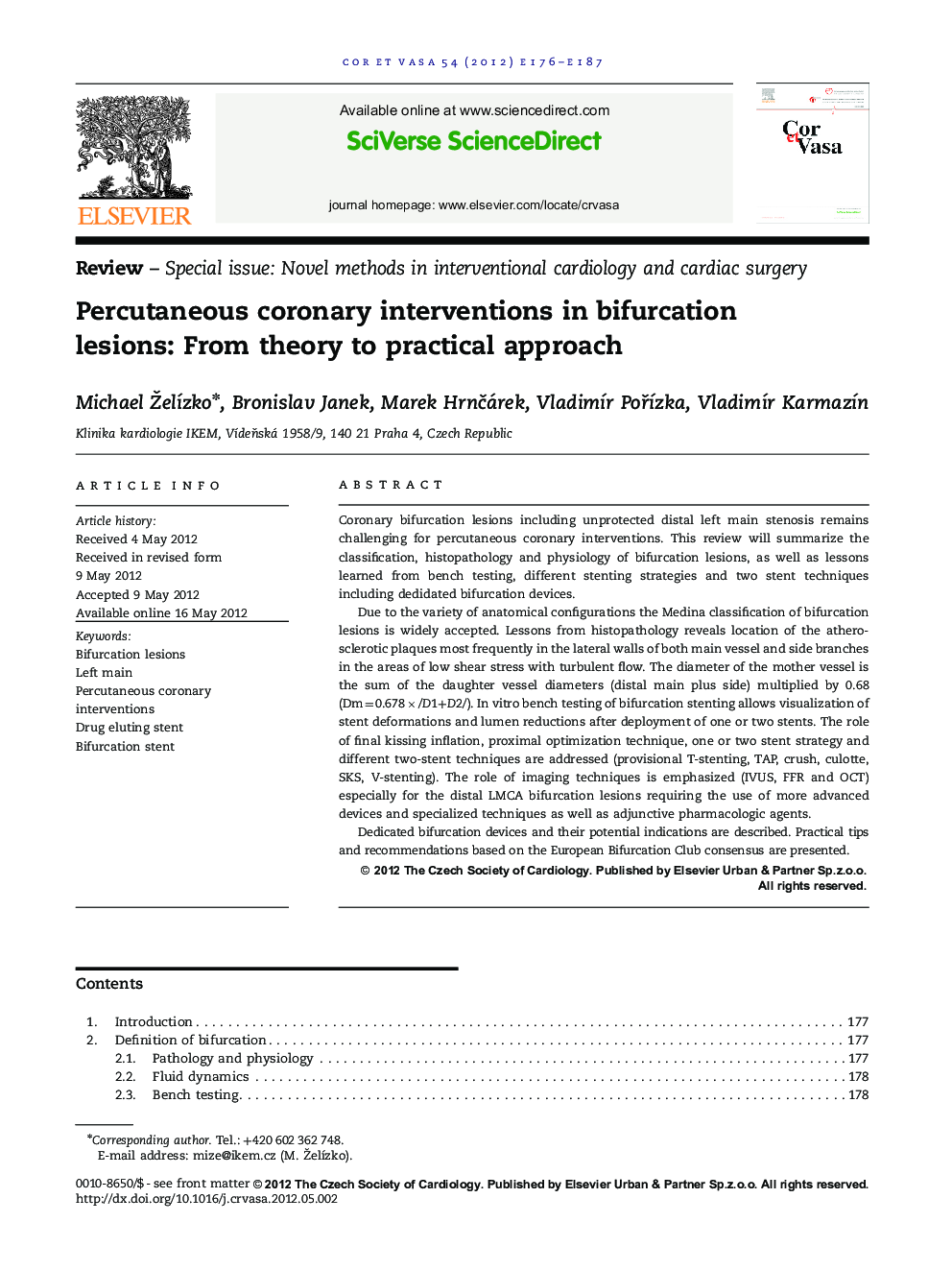| Article ID | Journal | Published Year | Pages | File Type |
|---|---|---|---|---|
| 2731627 | Cor et Vasa | 2012 | 12 Pages |
Coronary bifurcation lesions including unprotected distal left main stenosis remains challenging for percutaneous coronary interventions. This review will summarize the classification, histopathology and physiology of bifurcation lesions, as well as lessons learned from bench testing, different stenting strategies and two stent techniques including dedidated bifurcation devices.Due to the variety of anatomical configurations the Medina classification of bifurcation lesions is widely accepted. Lessons from histopathology reveals location of the atherosclerotic plaques most frequently in the lateral walls of both main vessel and side branches in the areas of low shear stress with turbulent flow. The diameter of the mother vessel is the sum of the daughter vessel diameters (distal main plus side) multiplied by 0.68 (Dm=0.678×/D1+D2/). In vitro bench testing of bifurcation stenting allows visualization of stent deformations and lumen reductions after deployment of one or two stents. The role of final kissing inflation, proximal optimization technique, one or two stent strategy and different two-stent techniques are addressed (provisional T-stenting, TAP, crush, culotte, SKS, V-stenting). The role of imaging techniques is emphasized (IVUS, FFR and OCT) especially for the distal LMCA bifurcation lesions requiring the use of more advanced devices and specialized techniques as well as adjunctive pharmacologic agents.Dedicated bifurcation devices and their potential indications are described. Practical tips and recommendations based on the European Bifurcation Club consensus are presented.
